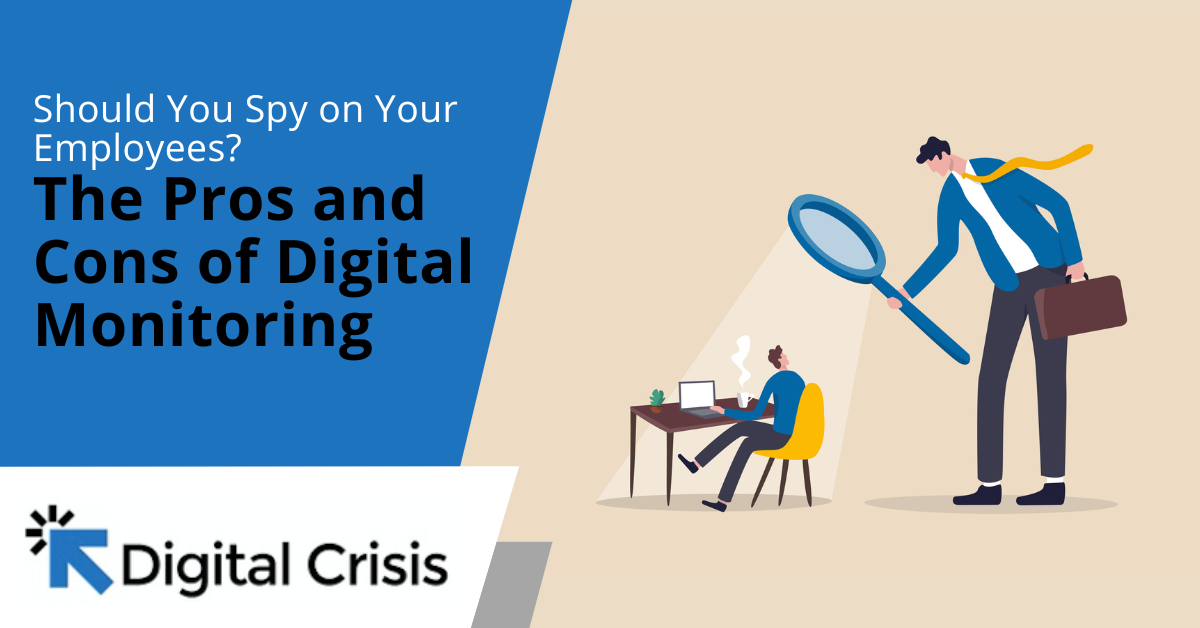

When it comes to employees, how far should you go with digital monitoring? With the ever-evolving digital landscape, the debate over employee monitoring is becoming more complex.
Many employers see it as an invaluable tool for streamlining processes and reducing costs while, on the other hand, it can be seen as violating the rights of employees and being intrusive when taken too far.
If it wasn’t already complicated enough, the landscape of employee monitoring has shifted dramatically due to the pandemic.
With the majority of offices now relying on remote working, digital monitoring has become a more typical part of business processes. With both employees and employers having to adapt to the new remote work reality, it is important to understand the potential risks and rewards of digital monitoring.
The question of how far employers should go with digital monitoring has always been a topic of debate.
Digital monitoring is the practice of monitoring employee activity on company devices, networks, and communications.
This can include anything from tracking things like:
In most cases, employers use this data to ensure employees are meeting expectations and maintaining productivity while also preventing data theft.
In the pandemic and post-pandemic era, digital monitoring has become more commonplace, as employers have shifted their operations to remote working.
It’s fairly obvious what employers stand to gain from digital monitoring: increased efficiency and safety. By monitoring employee activity, employers have a better understanding of how their teams are performing and can make changes as needed.
In addition, digital monitoring can provide employers with important insights into their workforce and give them a better understanding of their employees.
Some benefits of digital monitoring could be:
It’s important to note that, while digital monitoring can be beneficial, it can also be intrusive and lead to a ‘big brother’ atmosphere. Always ensure you are compliant with any local or national privacy laws.
Employers should always be respectful of employee rights when implementing digital monitoring protocols.
Not every cloud has a silver lining, and the same is true for digital monitoring. While there are many potential benefits, there are also some potential drawbacks to consider.
It can be easy to go too far with digital monitoring, resulting in a ‘big brother’ atmosphere and hampering employee morale. This can on occasion be further compounded by a lack of clarity from employers on what is being monitored and why.
Here are some potential negatives of digital monitoring:
Transparency is the key to maintaining trust between both employers and employees when moving forward with digital monitoring.
Here are some best practices to keep in mind when it comes to digital monitoring:
Good digital monitoring is all about striking the right balance between increased efficiency and respect for employee privacy.
In today’s digital world, digital monitoring has become a ubiquitous part of the office. As we’ve seen, there are both benefits and drawbacks to employee digital monitoring, and it’s essential to consider both when making the decision to implement monitoring protocols.
Ultimately, employers should strive for transparency while showing respect for employee rights and privacy. With this, digital monitoring can be an invaluable tool for employers and an acceptable part of contemporary office life. No one, on either side of the debate, wants to work in an environment where they feel their privacy is being invaded or their rights are not being respected.
If you have any questions or concerns about digital monitoring, please don’t hesitate to reach out to us.
Digital Crisis is here to answer your questions and help you make the right decisions for your business.
Digital Crisis provides customized managed IT support with the tools you need to make informed decisions about the security of your organization. We assist businesses in operating smarter, not harder.
Contact us today!